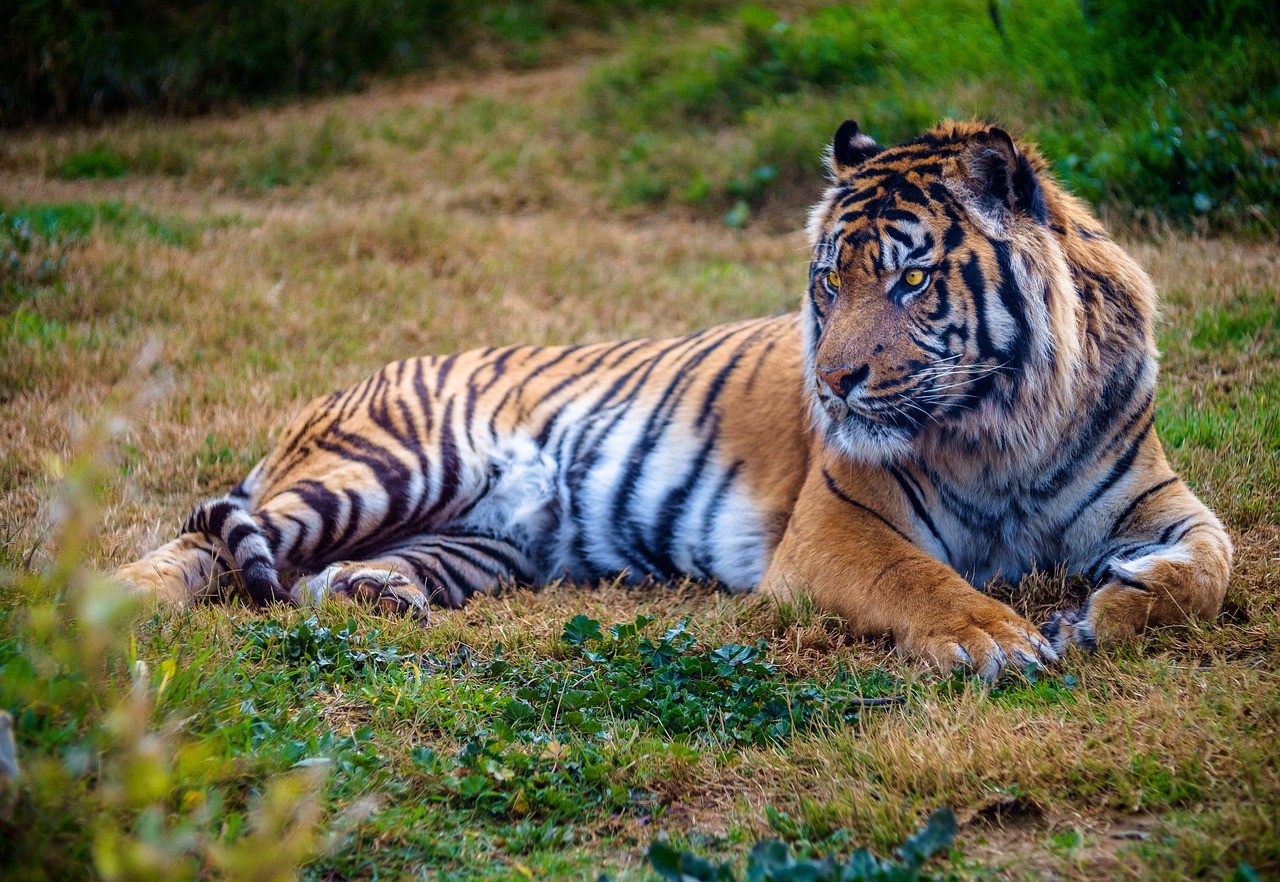How Can Technology Assist in Conservation Efforts for Endangered Species?

As we find ourselves in an age where technology surges forward at an astonishing pace, we are also witnessing a paradoxical and unfortunate reality – the rapid decline of our planet’s biodiversity. With increased pressures of climate change, deforestation and pollution threatening our wildlife, conservation has become a priority for many environmentalists and researchers. However, it is not all doom and gloom. The same technology reshaping our lives and societies has also offered us innovative tools to help in the fight against the extinction of species. From drones to data analysis, technology is playing a crucial role in monitoring and protecting our endangered animals. Let’s delve deeper into how technology is revolutionizing conservation efforts and providing us with hope for the future of our planet’s wildlife.
Harnessing the Power of Data for Biodiversity Conservation
In an era of big data, we are generating an unprecedented amount of information every day. This data-driven wave has also permeated into the field of wildlife conservation. By harnessing this power of data, conservationists are better equipped to understand the behaviors, habitats and threats facing endangered species.
In the same genre : Discover the thrills of a wish mystery box unboxing
Advanced data analytics can help identify key breeding grounds, migration patterns and changes in population sizes over time. Additionally, machine learning algorithms are used to predict future trends based on historical data, thereby enabling proactive conservation strategies instead of reactive ones.
Environmental DNA (eDNA), an emerging data source, is also aiding biodiversity research. This consists of genetic material collected from environmental samples such as soil, air or water, which allows researchers to detect the presence of a species without having to capture or physically observe it. This is particularly beneficial for monitoring elusive or small species that are difficult to study otherwise.
In the same genre : What Are the Ethical Considerations in AI-Driven Predictive Policing?
Remote Monitoring and Tracking Technologies
The traditional methods of wildlife monitoring often involve long hours of fieldwork in challenging terrains and weather conditions. However, technology has provided solutions to make this process more efficient and less intrusive for the animals.
Satellite imagery and GPS tracking are two such technologies that have revolutionized wildlife monitoring. These tools enable researchers to track the movements of animals in real-time, across vast distances and inaccessible terrains. Not only does this provide valuable data about migration patterns and habitat usage, but it can also alert conservationists to immediate threats such as poaching or natural disasters.
Camera traps are another form of remote monitoring technology. These motion-sensor cameras are often installed in forests or underwater to capture high-quality images or videos of wildlife in their natural habitats. They offer a non-invasive means of studying animal behavior and are particularly useful for nocturnal or shy species that are difficult to observe directly.
The Rise of Drones in Wildlife Conservation
In recent times, drones or unmanned aerial vehicles (UAVs) have soared in popularity in the field of conservation. They offer a dynamic and versatile solution to many of the challenges faced by conservationists, from monitoring large areas of land quickly to reaching remote or dangerous locations.
Drones equipped with high-resolution cameras or thermal imaging technology can provide detailed aerial footage of wildlife, which can be used to monitor population sizes, identify nesting sites, or detect illegal activities such as poaching. Some drones can also be fitted with speakers or scent dispensers to deter animals from entering dangerous areas or to guide them to safer habitats.
Moreover, drones can be used to deliver necessary supplies or medicines to animals in inaccessible areas. For example, they have been used to drop oral vaccines for endangered species like the black-footed ferret in the US, significantly reducing risks associated with manual vaccination.
Artificial Intelligence in Conservation
Artificial Intelligence (AI) is another technological innovation that’s making waves in conservation. Conservationists are using AI to analyze large volumes of data collected from various sources such as camera traps, drones, or satellite imagery.
AI algorithms can automatically identify and categorize different species from camera trap images or aerial footage, significantly reducing the time and effort required for manual analysis. They can also predict patterns or changes in animal behaviors, population sizes or habitats based on the analyzed data, thereby supporting decision-making in conservation strategies.
In addition, AI is being used to combat wildlife trafficking, which is a major threat to many endangered species. For instance, machine learning algorithms can analyze online marketplaces, social media platforms, and other internet data to detect and track illegal wildlife trade.
Remember, technology is a powerful tool in the fight to protect our planet’s endangered species. By embracing these advancements, we can hope to turn the tide and ensure a vibrant, biodiverse future for our planet. Nevertheless, it is essential to remember that technology is just one piece of the puzzle. It must be used in conjunction with traditional conservation methods, policy changes, and public education to achieve the best results.
Networked Sensors for Real-Time Conservation
In the pursuit of conservation technology, there has been a rise in the use of networked sensors for real-time monitoring of wildlife. These sensors, connected via the Internet of Things (IoT), offer a transformative approach to tracking and protecting endangered animals.
Networked sensors are small, unobtrusive devices that are strategically placed in protected areas such as national parks or wildlife reserves. They collect real-time data about various environmental factors such as temperature, humidity, and noise levels, which can impact the well-being of animals. This real-time data can be used to monitor changes in the environment, warning conservationists of potential threats such as wildfires, floods, or human intrusion.
Moreover, these sensors can be used to track the movements and behaviors of endangered species. For instance, they can monitor the feeding habits of animals, detect changes in their activity levels, or alert conservationists if an animal ventures too far from its usual territory. This information is vital for understanding the needs and threats of endangered species, thereby informing effective conservation strategies.
One of the significant benefits of networked sensors is their ability to provide continuous monitoring without disturbing the animals or their habitats. This is especially important in the case of sensitive or timid species that could be stressed by human presence.
Computer Vision and Remote Sensing for Wildlife Conservation
As part of the ongoing technological advancements, computer vision and remote sensing have emerged as powerful tools for wildlife conservation. These technologies are revolutionizing the way researchers study and protect endangered species.
Computer vision, a branch of artificial intelligence, involves training computers to interpret and understand the visual world. In the context of wildlife conservation, computer vision algorithms can analyze images or videos from camera traps or drones and accurately identify different species. This automated process not only speeds up the data analysis but also reduces the chances of human error.
Moreover, computer vision can detect changes in an animal’s appearance or behavior, which could signify disease, injury, or stress. This early detection means that conservationists can intervene and provide necessary care sooner, improving the survival chances of endangered animals.
On the other hand, remote sensing uses satellites or aircraft to collect data about the earth’s surface. This technology has been instrumental in monitoring land use changes, such as deforestation or urban expansion, which pose significant threats to wildlife habitats. By identifying these threats early, conservationists can take action to mitigate their impacts and preserve critical habitats for endangered species.
Conclusion: A Multifaceted Approach to Conservation
As we have explored, technology offers a wealth of tools to assist in conservation efforts for endangered species. From harnessing the power of data to using drones, artificial intelligence, networked sensors, and more, we now have innovative and less intrusive ways to monitor and protect our planet’s wildlife. These advancements provide a glimmer of hope in the face of rapid biodiversity loss and climate change.
However, while technology is an invaluable asset, it should not replace traditional conservation methods. It’s crucial that we continue on-the-ground efforts, including habitat restoration, community engagement, and law enforcement, to protect endangered species. After all, each species plays a unique role in maintaining the health and balance of our ecosystems.
Moreover, policy changes are needed to address the root causes of biodiversity loss, such as unsustainable development, pollution, and climate change. Public education is also essential to raise awareness about the importance of wildlife conservation and to foster a culture of respect and care for nature.
In conclusion, the battle to save our planet’s endangered species requires a multifaceted approach. It’s a blend of technology, traditional methods, policy changes, and education. By working together, we can hope to reverse the trend of biodiversity loss and create a sustainable future for all inhabitants of our planet.
